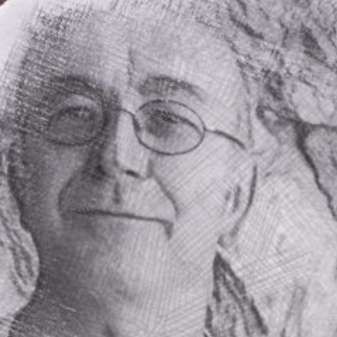To dispel the kind of causeless tiredness which one might be tempted to put down to age, I think of Rameau, who only took up writing opera at the age of 50 - and henceforth I will think of Les Boréades, which he composed at the age of 80. Although rehearsed in 1763, the year before Rameau's death, the opera was never performed. The surviving suite of dances emerged only in the 20th century.
I was intrigued to discover as much as I could about the performance of such a 'period piece' by a modern symphony orchestra, and attended the excellent pre-concert talk, given by David Chivers (RSNO Assistant Principal Violin). He stressed the contribution of the guest conductor, Sir Roger Norrington, to the historically informed performance movement. Unlike 'authentic' performance, requiring 'period instruments', Norrington's approach is concerned solely with approach to playing - particularly, the avoidance of vibrato. Omnipresent vibrato as a default emerged, Chivers informed us, only in the 1930s. Therefore, this moveable feast of pitch and projection would be absent from the entire evening's programme - its absence made up for by an intensification of the bow's contribution to articulation.
Chivers also pointed out that half of the available rehearsal time had been spent on the Rameau. The energy in the performance suggested that this was time very well spent. The dance movements of Les Boréades embodied the two qualities I've come to love most in Rameau - vigour and tenderness - the final 'Contredanse' and the 'Rondeau vif' being respective examples of these affections. On the final beat of this cheerful suite, Norrington turned, palms upwards, to the audience as if to shout 'Hey!' Fast approaching Rameau's age at the time of composition, the conductor's joie de vivre was impressive and infectious.
Despite the contrasting musical language, the performance of Haydn's Symphony no. 85 in B flat, 'La Reine' shared some performance features with the Rameau - particularly the positioning of the two groups of standing woodwind players at opposite sides of the orchestra - flutes and oboes on one side, clarinets and bassoons on the other. The effect of this on clarity and separation of sound was unmissable. In his excellent programme notes Mark Fielding pointed out how the Parisian orchestra 'Le Concert de la Loge Olympique' - for whom this symphony was written - boasted fine woodwind players. The second movement, 'Romance' - a set of variations on the French folk song 'La gentille et jeune Lisette' - featured solo flute against a very spread-out string quartet. This passages was very elegantly played by the principals of each section. Norrington finished this work in the same pose as he had the Rameau. This conferred upon him something of the air of a magician, in which regard the audience was beginning to hold him.
The reorganisation and enlargement of forces for Brahms' Symphony no. 2 in D, Op. 73 was unmistakable; eight double basses aligned centre stage behind a reunited woodwind section, now sixteen strong. Despite the relatively gargantuan forces, this work and its performance shared two elements with the others on the programme - elegance and a nimble optimism. The first main theme of the opening Allegro non troppo - reminiscent of the composer's earlier Wiegenlied ('Lullaby') - rolled along in breezy manner. Despite dark orchestral colours (relative to the programme's earlier pieces) the Adagio non troppo exuded an air of sensitive introspection free from any romantic tendency to brooding. The newly reunited woodwind section supplied, with great teamwork and balance, the lovely airy opening to the fleet-of-foot Allegretto grazioso - by far the symphony's shortest movement. The closing Allegro con spirito was jubilation incarnate. One couldn't help feeling that Brahms had, by this point in his development, emerged from the gigantic shadow of Beethoven into sunlight and symphonic confidence. The RSNO's shining brass section delivered the triumphant fanfare which brought this energising performance to an end. The response of the Usher Hall audience was equally full-bodied; happy and noisily grateful for an excellent evening's music.


